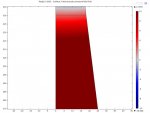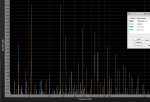Re: High Frequency Compression Driver Evaluation
Mine are series two diaphragms and i have blown quite a few of them cut at 1600Hz. Hence the no real use of the fact that they can go lower. They can not survive it for long time.
Mine are series two diaphragms and i have blown quite a few of them cut at 1600Hz. Hence the no real use of the fact that they can go lower. They can not survive it for long time.





